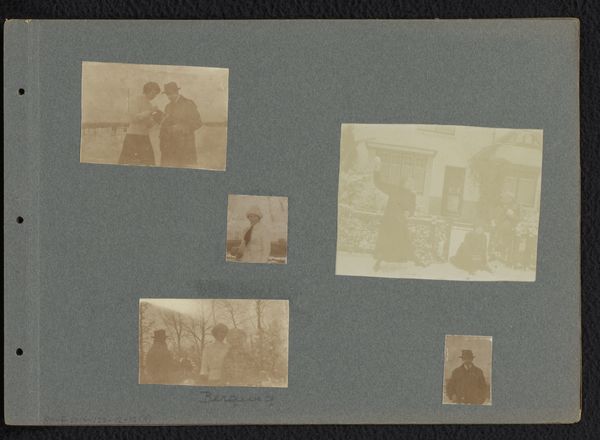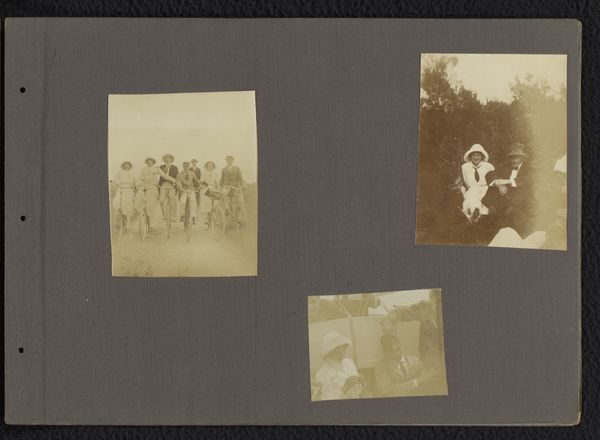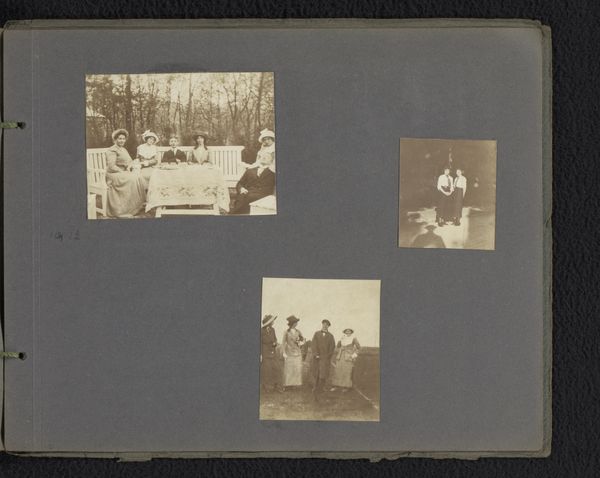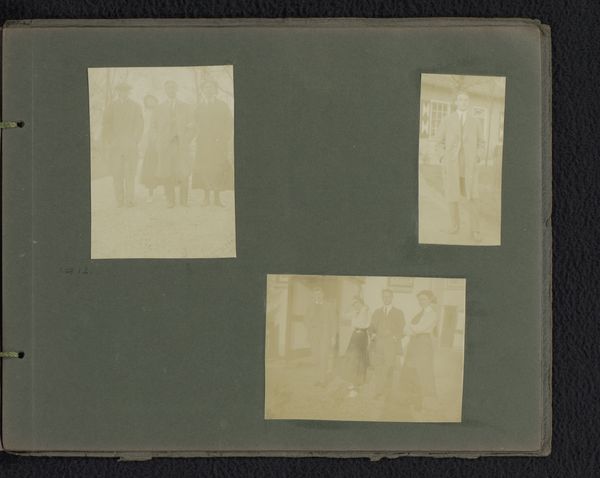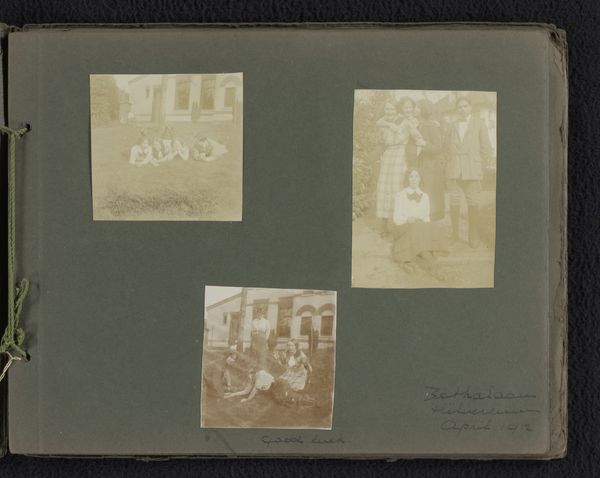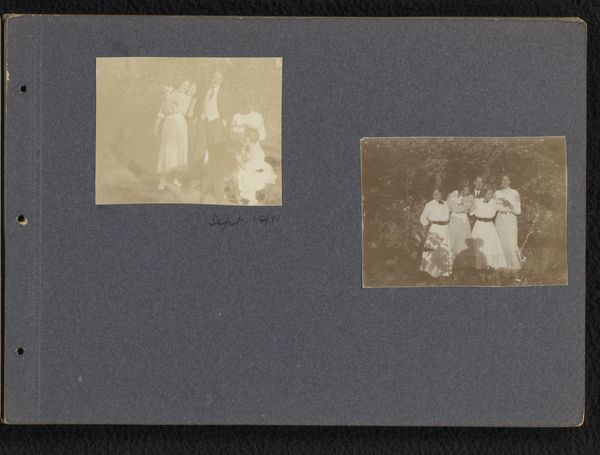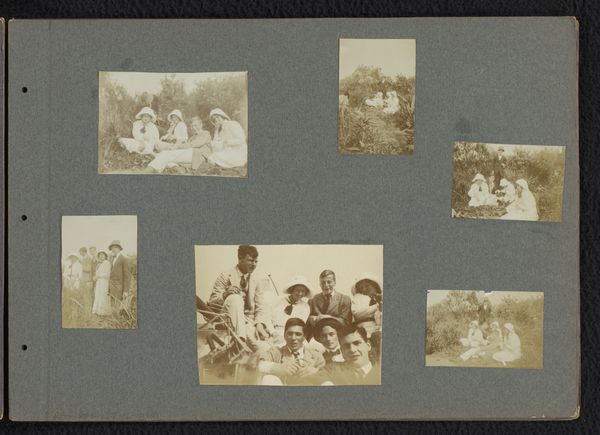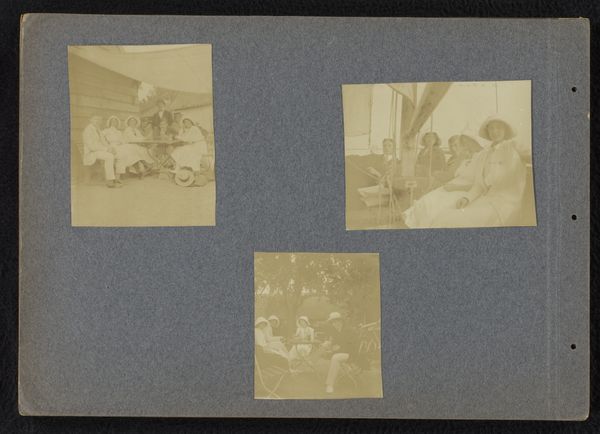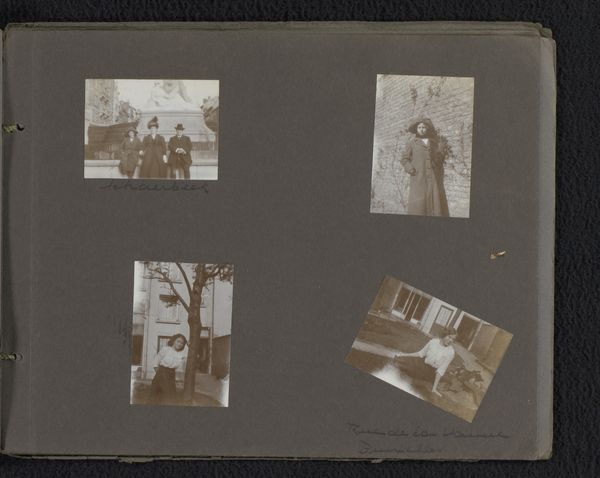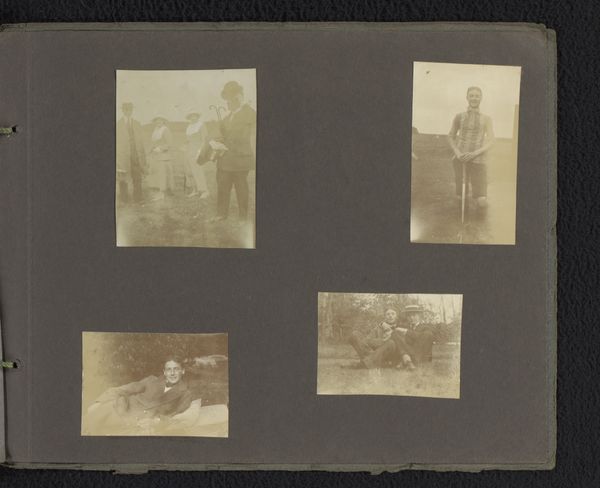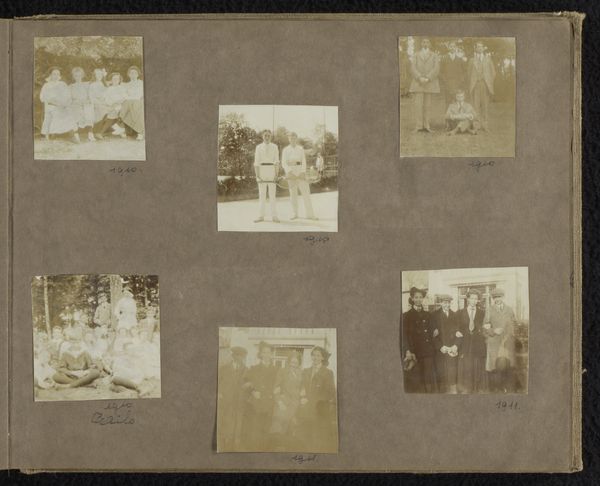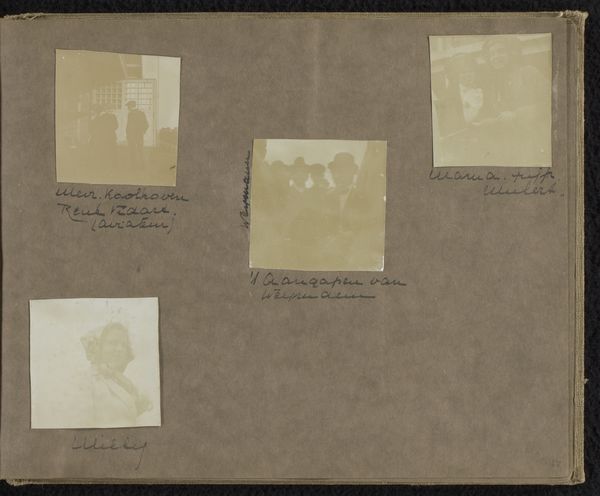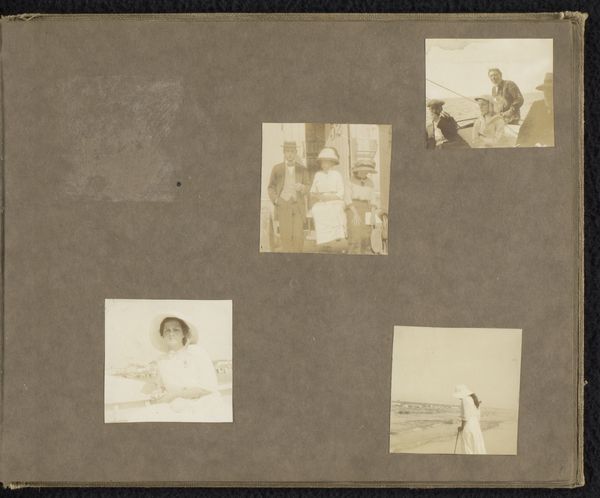
photography, gelatin-silver-print
#
faded colour hue
#
photo of handprinted image
#
toned paper
#
pale palette
#
limited colour palette
#
reduced colour palette
#
muted colour palette
#
pictorialism
#
white palette
#
photography
#
group-portraits
#
gelatin-silver-print
#
muted colour
#
genre-painting
#
limited palette
#
realism
Dimensions: height 220 mm, width 310 mm
Copyright: Rijks Museum: Open Domain
Editor: This is Carolina (Loentje) Frederika Onnen's "Family Fun on an Ice Rink," a gelatin silver print from 1912. There's a beautiful sense of nostalgia in the pale hues, and something almost melancholic about the stiff poses. How do you interpret this work, especially considering it's a family portrait? Curator: It's fascinating to consider this photograph within the context of early 20th-century social expectations. While ostensibly a candid family moment, it's clearly staged, reflecting the rigid gender roles and class structures of the time. Notice how the women are grouped together, their clothing restricting movement, while the men, though present, seem somewhat detached, almost observing. Does this curated "family fun" belie a more complex reality? Editor: I hadn't thought about it that way, but you're right. The poses seem so unnatural, almost performative. Was this kind of staged family portraiture a common practice then, a way to project a specific image to the world? Curator: Precisely. Photography, especially at that time, was a tool for constructing identity. These carefully composed scenes offered a glimpse into how families wished to be perceived: respectable, happy, and conforming to societal norms. But it’s also interesting to note the muted palette and soft focus, typical of Pictorialism, which aimed to elevate photography to the status of fine art. Does that suggest a conscious artistic intent beyond simply documenting a family outing? Editor: It's as though Onnen is subtly critiquing the very idea of the happy family portrait. Curator: Or, at the very least, acknowledging the performative aspect inherent within it. By using the visual language of art, she invites us to question the constructed nature of familial happiness and consider the societal pressures that shaped these individuals' lives. Editor: Seeing it through that lens really shifts my understanding. It's much more complex than just a picture of a family skating. Curator: Indeed. And that’s where the intersection of art history and contemporary theory helps us unpack the multiple layers of meaning embedded within seemingly simple images. Editor: I'll definitely look at similar works differently now. Thanks for opening my eyes to this context.
Comments
No comments
Be the first to comment and join the conversation on the ultimate creative platform.
